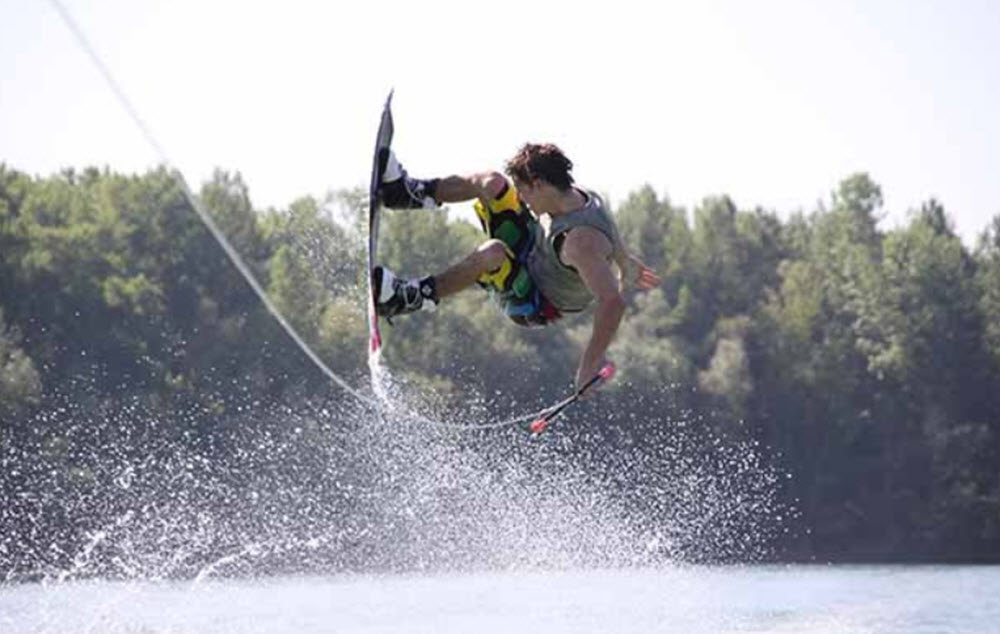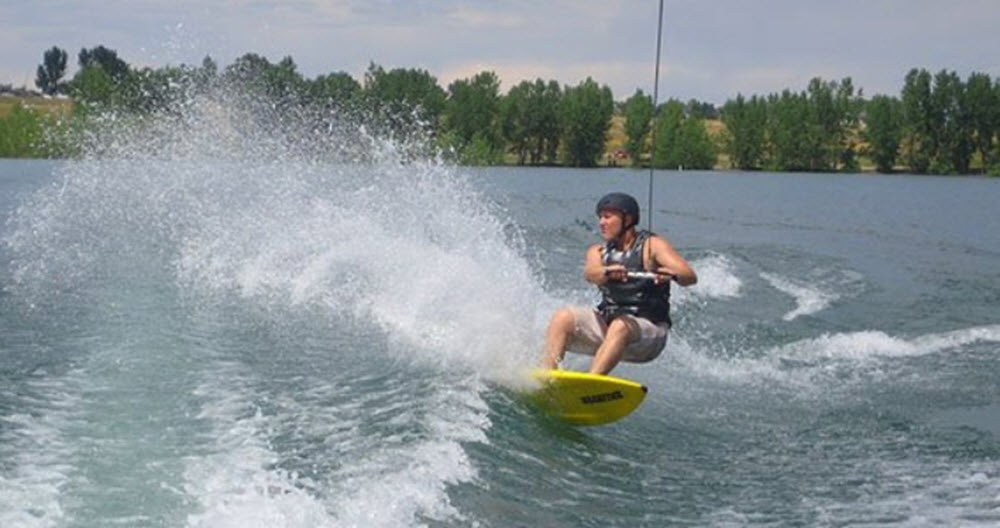Contents
Water skurfing is similar to water skiing, but a board is used instead of skis. The term is a portmanteau of (water) skiing and surfing.

During water skurfing, the skurfer rides behind the boat, on the board, in a fashion similar to when a surfer rides a wave – but the skurfer holds on to tow rope.
One advantage of water skurfing over water skiing is that the boat doesn’t have to go as fast as for water skiing. A less powerful boat will, therefore, work fine for water skurfing. In this regard, water skurfing is similar to knee-boarding.
One advantage of water skurfing over traditional (wave) surfing is that you don’t have to go to a place where the waves are sutiable for surfing. Water skurfing relies on the power of the boat; not on naturally occurring waves. Water skurfing can, for instance, be enjoyed far out from the beach or in placid rivers and lakes.
The skurfboard
Originally, standard surfboards were used for skurfing. Eventually, specially made skurfing boards were designed. A common skurfboard tends to be significantly shorter than a standard surfboard, and it is equipped with three large fins that are placed in a way that helps with maneuvering when the skurfboard is towed behind a boat.
Finless skurfing
In recent years, finless skurfing has grown popular as an alternative to the older style of skurfing. Without any fins under the skurfboard, more balance and skill is required by the skurfer, and the lack of fins also puts a hamper on cutbacks and carving. The main upside of having no fins is that the skurfer can spin the board around in a 360-degree rotation without encountering resistane from the fins.
Freeriding
Freeriding is when the skurfer rides the wake of the boat without holding on to a tow rope.
The ride starts with the skurfer holding on to the rope in normal fashion. She will then pull herself up the rope to skurf in the largest part of the wake, where she gently pumps the skurfboard to maintain speed and moves her weight further forward to keep her spot on the wake wave. Once she knows that she is being propelled by the wake, rather than pulled by the rope, she tosses the rope into the boat. She is now freeriding.
Is it possible to water skurf after a jet ski?
Yes, it is.
Is water skurfing the same as wakeboarding?
The two sports are related, but water skurfing is commonly seen as a precursor to wakeboarding, rather than them being two variants of the same sport.

Background
The term skurfing was coined in New Zealand by the surfboard shaper Allan Byrne.
- The world’s first mass-produced plastic roto-molded construction skurfboard was launched by the Australian surfboard shaper and inventor Bruce McKee and his associate Mitchell Ross. At first, they called the board Mcski, but the name was later changed to SSS skiboard and then Wake-snake. This early skurfboard had a concave tunnel bottom and a keel fin, and you attached your feet to the board using adjustable rubber straps. Later models featured two additional fins: two small side fins that provided increased hold and better maneuverability.
- In the mid-1980s, the branded water-sport product Skurfer was trademarked by Tony Finn, who produced the items under royalty. He had learned about skurfing from some friends of Allan Byrne, who were making their own skurfboards in Queensland, Australia.
